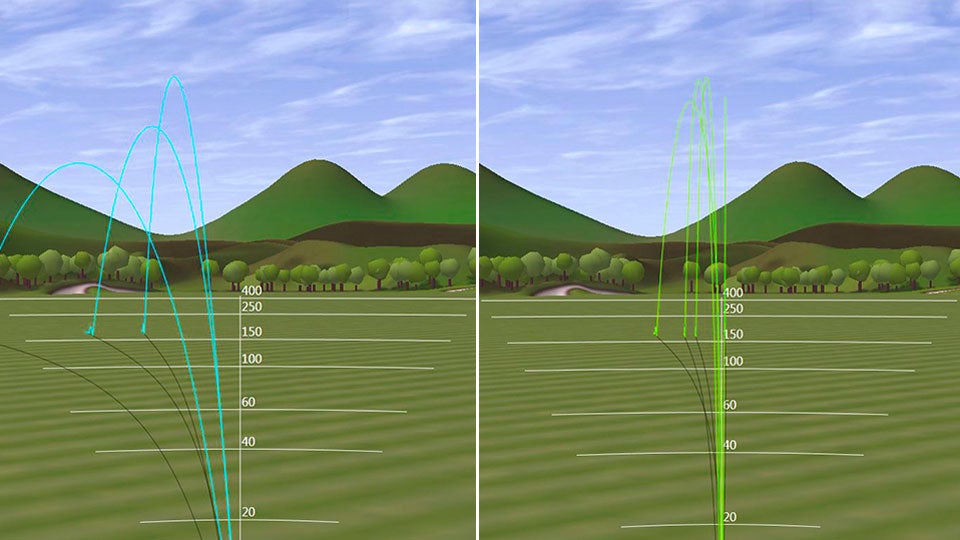“Let me guess,” Cool Clubs master fitter Rob LaRosa says after watching me hit some 6-irons. “When you play, you’re either dialed in, or it’s like you’ve never held an iron before.”
Damn straight. Or rather, damn crooked. My iron game changes with the calendar. Slice Sunday. Monster-hook Monday. Fat Tuesday—and I don’t mean Mardi Gras. This day, at Cool Clubs’ fitting center at Sterling Farms Golf Course in Stamford, Conn., my hooks are back. I assume my swing is the culprit, but the Doppler-powered TrackMan readout on LaRosa’s computer screen says otherwise. Turns out, a carpenter can blame his tools.
“Your swing path is excellent,” says LaRosa, 43, a 17-year clubfitter and a PGA pro. I’m relieved—and confused. If my swing is sound, why are my misses sailing left of Bernie Sanders? “The lie angle is too upright. The heel hits the ground, shutting the face, and you hook it.” He taps some keys. My club’s digital avatar appears. “See? Seven degrees closed at impact. That’s a lot. And your irons are about an inch too long—to compensate, you hunch your torso [in your downswing] and collapse your arms. You’re losing swing speed, and your misses could go anywhere.”
In other words, it’s not me. It’s my golf clubs.
I test several 6-irons, all of which are an inch shorter than what I’m used to. (Cool Clubs works with more than 15 manufacturers.) Something clicks with Ping’s i-series. The shorter club is jarring, but my arms are free to fully extend. I feel athletic (for a 44-year-old with a tweaky lumbar). Hooks become draws. My shots stay airborne longer, as if rocket-powered. All but my worst swings are more playable.
LaRosa crunches the numbers on my Ping swings. I can thank an added 600 rpm of ball speed for that extra air time. My clubface was 7 degrees open at impact; now it’s zero (aka square). Upping my launch angle improves my “landing angle”—which I didn’t know was a thing—to a more desirable 49 degrees, up from 40, for drop-and-stop approaches. I didn’t get longer (my usual 165 yards with 6-iron), but I got way straighter, leaving it just 16 feet left of my target on average, compared with 88 feet left with my old 6-iron. A small sample size (just a couple of dozen swings), but still.

“That’s the difference between a 16-foot birdie putt and finding the left rough,” LaRosa says. With time and practice, he predicts, I can expect to double my GIRs.
You had me at “16-foot birdie putt.”
LaRosa estimates that roughly 90 percent of recreational golfers play clubs that are not properly fitted for their bodies and swings. “That’s too bad, because a bogey golfer can shave 10 to 12 strokes just by using the right clubs,” he says. “But most guys still buy off the rack.”
Not me. I’m joining the fit parade. Once you’ve experienced pinpoint iron play, you can never go back.
Now, about my hinky driver…







